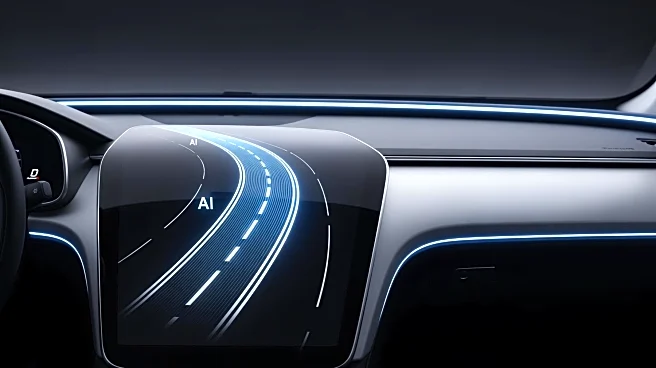What's Happening?
Polestar has announced a new software update for its electric car, the Polestar 4, which incorporates Google's live lane guidance into the vehicle's head-up display. This feature uses Google's on-device
AI to analyze lane markings, road signs, and other visual cues, providing drivers with real-time navigation assistance. The system offers visual reminders and audio alerts to help drivers change lanes in time for upcoming exits, enhancing safety and reducing last-minute navigation errors. The update is part of Polestar's commitment to improving driving experiences through technology.
Why It's Important?
The integration of AI-powered lane guidance in the Polestar 4 represents a significant advancement in automotive technology. By providing real-time navigation assistance, the feature enhances driver safety and convenience, particularly in unfamiliar environments. The collaboration between Polestar and Google highlights the potential for AI to transform in-car navigation systems, setting new standards for automotive innovation. The successful implementation of this technology could influence other automakers to adopt similar features, driving industry-wide advancements in vehicle safety and user experience.
What's Next?
Polestar plans to roll out the live lane guidance system through an over-the-air software update for Polestar 4 owners in the US and Sweden, with more markets to follow. The company is likely to continue exploring AI applications to enhance vehicle functionality and user experience. The automotive industry may see increased interest in AI-driven navigation systems, prompting further collaborations and technological developments. The impact of this feature on driver behavior and safety will be closely monitored as it becomes more widely available.
Beyond the Headlines
The broader implications of AI integration in automotive technology include potential shifts in how vehicles are designed and operated. The use of AI for navigation and safety features may drive innovation in vehicle design and user interfaces. The cultural acceptance of AI in driving may vary, influencing how consumers perceive and engage with automotive technology. The long-term impact of AI on the automotive industry will depend on how effectively these challenges are addressed and the balance between technological innovation and user experience.












